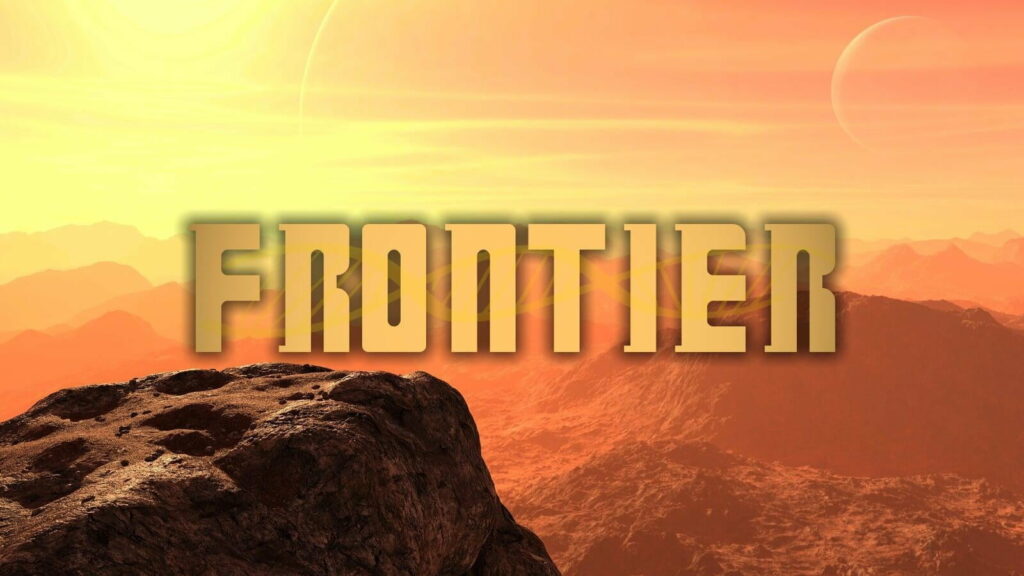
“It was exciting to get a chance to develop on Dreamcast – it was my first console title – and a console MMO was like science-fiction at the time over 20 years ago. I remember getting to discuss the project in one of the inner lounges of Sega’s E3 megabooth, and holding the carved wooden prototype of a Dreamcast controller while we talked about what Frontier could become.” -Chris Foster – Lead Designer of Frontier
I’m continually fascinated by the amazing library of games that the Dreamcast could have had. Doing a quick Google search for “cancelled dreamcast games”, you’ll find tons of info on well over 100 games that never made it to the platform for one reason or another. Sometimes we’re lucky enough to have access to a beta build that made its way onto the internet, so we can at least get an idea for the developer’s vision, as buggy as it may be sometimes. In other cases we only have a few screenshots and maybe a video or two. Then there are some games that are little more than a title and maybe a brief description, which just happens to be the case with a game called Frontier. First announced in October of 1998, Frontier was an massively multiplayer online game that was being developed by Turbine Entertainment in partnership with Sega. Outside of this initial announcement, very little information was divulged about the game. A Google search will reveal little more than two articles, one by IGN about the game’s announcement in 1998 and another by GameSpot about its cancellation in 2000. Being the top-notch Dreamcast detective that I am, I had to find out more! My brilliant detective work got me in contact with the game’s lead designer, Chris Foster, as well as the lead artist, Michael Sheidow, who were both kind enough to fill me in on all the juicy details on this highly ambitious Dreamcast title that never came to be.
Q: First off, thanks for taking the time to answer a few questions about Frontier. I’m sure you didn’t expect to be doing an interview about an unreleased game almost 20 years after its cancellation. Haha. Anyway, let’s start off with a bit about yourself. Could you tell us a bit about your position at Turbine and what your role was in the development of Frontier?
Chris: I joined Turbine in 1997, after having worked at Sierra/Impressions Games for roughly 5 years. That made me one of the more experienced video game developers at Turbine, though I still had PLENTY to learn.My first job was helping design the interface for Asheron’s Call (with Zach Shukan), as well as advising ways to better coordinate design and implementation. I was the main designer for Frontier — I think I designed most of it – and I developed the initial pitch. The project was very much a collaboration; the pitch came alive in large part due to the art that illustrated some of its core concepts.
Mike: My name is Michael Sheidow. I graduated from Rhode Island School of Design in June of 1996 and started my full-time position at Turbine as an Artist working on Asheron’s Call. I had a brief internship at the company earlier that winter when the company was called Second Nature Interactive and they were located in Providence, RI. I started my career at Turbine with no game experience and I would say most of the guys who worked there had little to no experience. The average age of the employees was about 25. What we lacked in experience we made up in passion and effort. Asheron’s Call was the first game that the company created. It was one of the first 3D MMO’s ever and was quite an accomplishment. The company learned a lot about server architecture, load balancing, modular asset creation and managing frame rate performance.
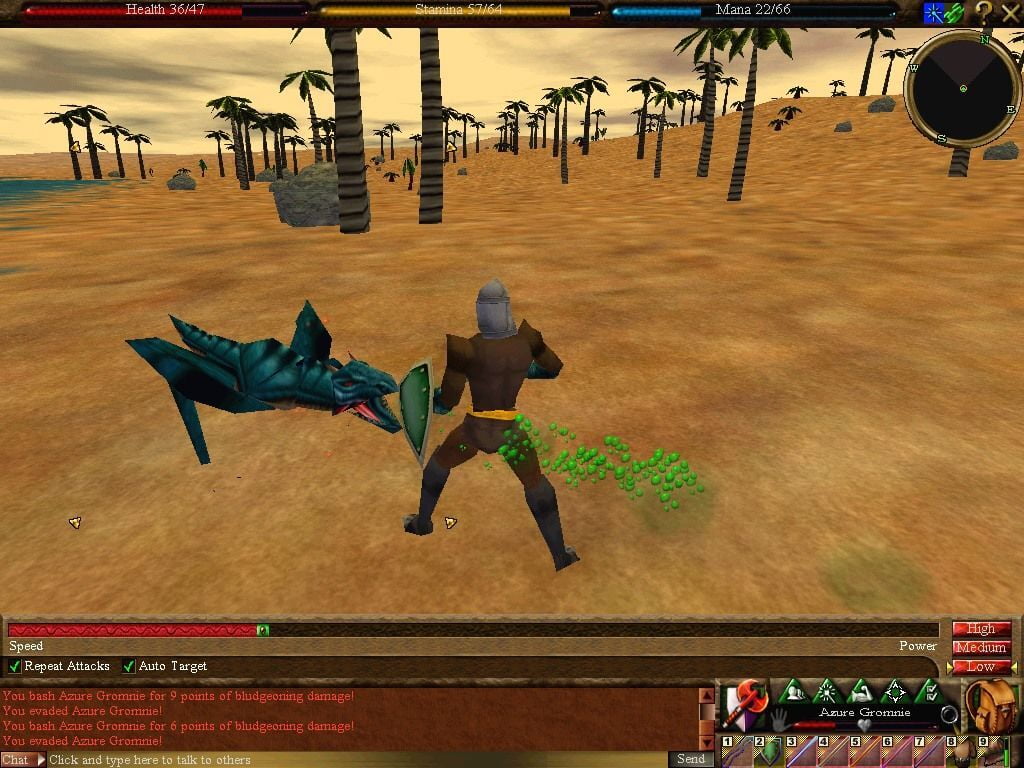
Q: Moving on to the game itself, can you give a general overview of what the game was going to be about?
Chris: Frontier was going to be about exploring an alien world (the original pitch was called “Alien Explorers”) by means of surrogate creatures, purpose-bred to survive in the hostile and varied landscape. It would have played like a typical MMO adapted to a console, but with a unique twist of creature-breeding being a source of character development.
Creatures harvest DNA from the hostile creatures they defeat, and that DNA can be injected into eggs to create new hybrids, potentially acquiring and blending with the traits of those foes. Players were going to curate a menagerie of creatures attuned to different environments and challenges.
The rest of its uniqueness would have come from adapting MMO concepts to the limitations (control and technical) and potential of the Dreamcast console, such as (obviously) the network adapter, and the VMU.
Mike: As Asheron’s Call was coming to the end of development, we began talking with Sega about developing a new game for their Dreamcast console. To say we were excited would be an understatement. Chris and I were both tasked with coming up with the pitch for the game. Chris came up with the design while I supported him with art ideas. We wanted to build off of the lessons we learned while working on Asheron’s Call while also taking into consideration the technical limitation of the Dreamcast. I believe Monster Rancher on the PlayStation was pretty popular with folks in the office and the Tamagotchi craze was taking off in the United States. I think those two things, among many others, inspired the idea of Frontier. I think we thought, “Hey, wouldn’t it be cool if you could create a creature, explore an alien world, collect resources and if you encountered another creature, you could fight it and collect samples of its DNA that you could then use to modify your creature.” The thought was, we could open or limit certain areas of the game by requiring your creature to have certain DNA abilities. For example, we might have an underwater level in the game that required you to find and mutate your creature to have the ability to breath under water. By modifying your create in this way, you might lose the ability to double jump or fly or breathe fire…etc. We also wanted to lean into the idea of these creatures as virtual pets like a Tamagotchi. It was important to us that these creatures were very expressive and would react to how you treated them. I believe we even talked about leveraging the Dreamcast’s removable VMU (Visual Memory Unit) to save and take your creatures with you to your friends house. This way you could plug in your VMU into your friend’s Dreamcast controller and battle with your friend’s creatures.
In order for us to create a vast number of creature options, we needed to design the creatures in a modular way. Fins, spikes, horns and other frills could be attached to the creature at different anchor points. We also explored different ideas for locomotion. Some creatures would have arachnid legs, some would hop, some would run…ect. We also would have color and texture swaps that would add additional customization. Early game consoles did not offer a lot of memory or graphics power so going with realistic creatures was not really an option. We chose to go with a more bold and stylized look for the game. We wanted the game to be playful but also brutal at times. Games like Abe’s Oddworld really did a great job with this and was another inspiration at the time.

Q: Very interesting! It certainly sounds like a unique concept, even by today’s standards. Creature breading and DNA manipulation have been done before (the Dreamcast’s own Seventh Cross Evolution comes to mind) but bringing that into an open-world MMO sounds amazing. Was there going to be a storyline to follow or would this just be one of those games where you would have to check the manual if you wanted a bit of a backstory?
Chris: Turbine ended up doing a lot of storytelling in Asheron’s Call. We did plan to tell a story similarly in Frontier, through the world and how we updated it.
The backstory involved an explorer who discovered the world, then when she realized it was going to be exploited by the corporations/governments spreading across the world, she disappeared. I think she was going to be one of the prime movers of the story, delivered through content updates.
That said, we had a LOT of ambitions for the game, and we’ll never know what parts of that would have been practical for the game.
Q: Ah yes, corrupt governments and corporations. A classic. It sounds like the missing explorer angle could give the player extra incentive to explore the world as well. Speaking of the world, what would the planet be like? What type of terrain would you expect to encounter and what things might there be for a player to discover?
Chris: Terrain had some early explorations, including one prototype environment. The intention was to have different biomes require or reward specific types of DNA, so that (as Mike mentioned) you’d want to customize a variety of creatures for different regions and purposes.
There were going to be hints of ancient history for the planet to be found, as well as clues to the present dealings of various organizations. It would have been fleshed out if the project had moved forward.
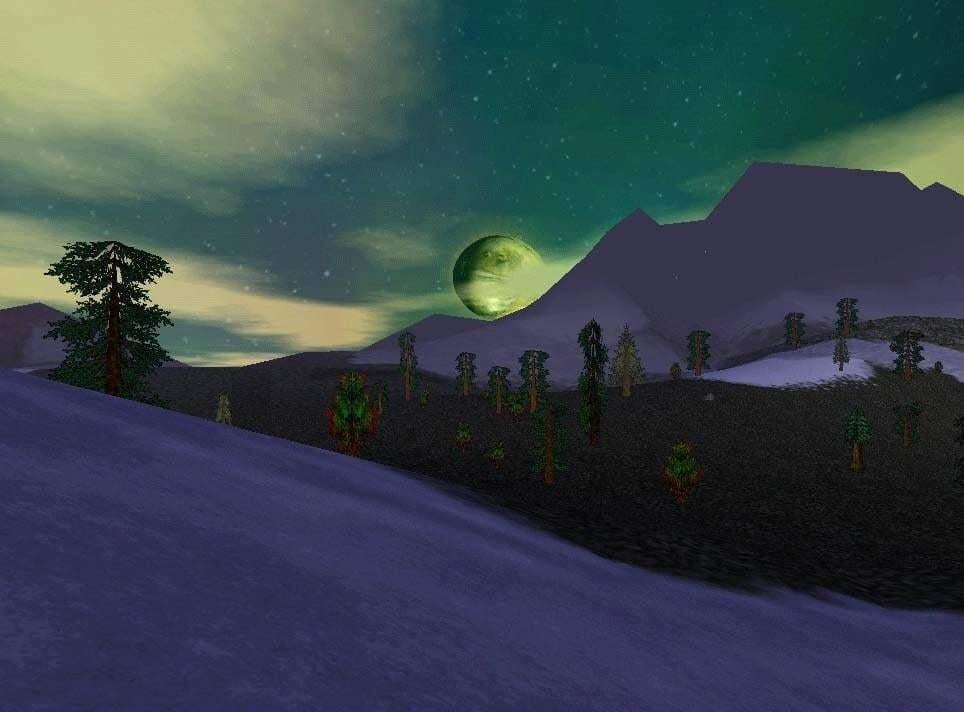
Q: Very intriguing! Can you tell me about the battle system? It sounds like it could have been really complex and varied considering the many different possible creatures you could have in the game.
Chris: Like most of the design, the combat elements were speculative and… not ambitious, but comprehensive. It was similar to MMO-style combat of the day – targeted attacks instead of free brawling – with tons of combat effects and attack types outlined in the spec.
We never got to the point in development where we prototyped combat, which is when layers of the design would have been carved away. If we’d shipped the game, I’d bet it would have had a simpler design, and one that had found the proper blend of PC-MMO and console-RPG mechanics. As written, there was much more game than we could have practically shipped, and none of it was informed by the actual iterative development that was to come.
Q: Ah I see. What about player stats? Was everything to be based off of the DNA manipulation mechanic or would there also have been traditional stats and an XP/level system like most other RPGs?
Chris: I believe the DNA/cross-breeding system would have defined a creature’s potential, but there would have been systems to develop those abilities akin to stats and leveling.
Those systems would have been themed more like training; still stat based, but presented as your (offscreen) character training the creature to perform certain abilities, to guide its growth.
There was also a desire to create some behavioral stats, including obedience, so that getting a creature to do something would have been somewhat at the mercy of the creature’s personality.
It’s unclear if all of these ambitions would have made it into the shipping game.
Q: Let’s move on to the online aspect of the game. Being an MMO, this is obviously an important part. I know the game was still in early stages but what was your goal for the number of players that could be online at the same time? Looking at other online Dreamcast games, most, including Phantasy Star Online, were limited to 4 players in a game. Do you think you could have made a true MMO, populating the world with hundreds or thousands of players at once?
Chris: The intention was to have a more open-world structure, but not a fully seamless world. Instead, The world would be divided into geographical regions so that population per region could be constrained.
This is an area where implementation would have set firmer limits on populations. The spec was ambitious and I suspect the server team was going to let the technology prove what was and wasn’t practical. That said, I feel like any solution would have tried to give the sense of a larger community, and provide places where chance encounters between strangers (under safe circumstances or otherwise) were possible.
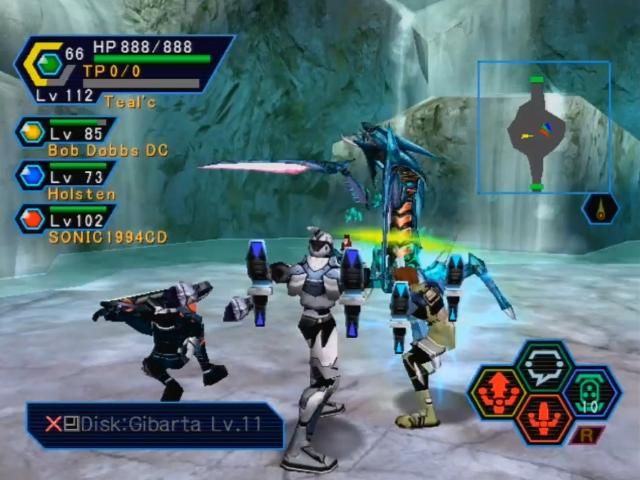
Q: How would online interaction with other players work? Would it have been a simple text chat system like most other online games or did you have anything different in mind? Voice chat perhaps?
Chris: We were going to use text chat, with some degree of chat presets to help with controller-based communication.
One interesting thing we hoped to do was to have animation emotes that let the animals express emotions through body language. Animal behaviors were going to give more room to be expressive through animation.
Voice chat wasn’t considered, given the constraints of a console game in those days.
Q: Oh very cool! So how would players meet up in the game? Would there be certain areas where players would spawn together after logging in and was there a messaging system planned if you wanted to meet up with a specific player?
Chris: There would be a mix of standard MMO structures and features for socializing. “Preserves” provided a set of town-like gathering places on the planet, with “watering holes,” stables and robo-docs for the creatures, arenas for sparring, and other structures for receiving quests. There were also plans for messaging and trading services.
I’ll say again that this game design was overstuffed with features that we WANTED to build, and the project never got to the point where they would have been prioritized. That would have culled much of the design from the initial release.
Q: It definitely sounded ambitious so I have no doubt it would have had to be scaled back a bit. Regardless, even a fraction of what you’ve described so far would have been amazing. Moving on, could you describe a bit about what kinds of quests there would be in the game? Were they all co-op or would there be player vs. player as well?
Chris: This pre-dated the quest-rich example set by World of Warcraft, so the plans were closer to Asheron’s Call in that there would be relatively simple “go find this item (or take it from someone) and bring it back” quests, more complex ones to be run by admins as special events, and probably a few in-between.
There were going to be PK zones, and rules that tried to let non-PK and PK players coexist. A lot of this was written while Asheron’s Call itself was figuring out its approach to quests and PK. Had Frontier gone forward, I would guess it would have evolved its quest and PK designs based on what worked and didn’t work for Asheron’s Call.
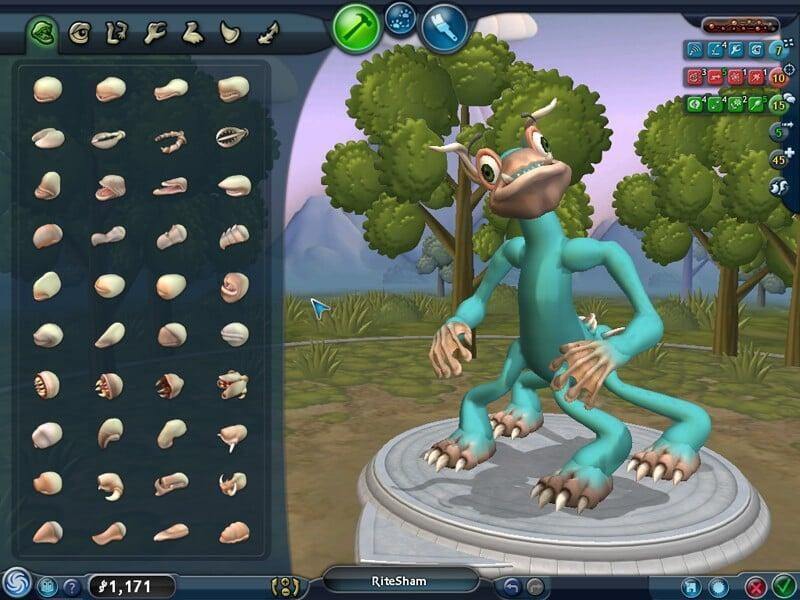
Q: All I can think of after reading all your responses is how much I really want to play this. I can’t think of any other game out there at the moment that quite fits this description. I think gamers really missed out on something great here. This kind of leads us to the ultimate question, what happened to Frontier? How far did the game get into the development process and what was the reason for its cancellation?
Chris: Thanks. We were excited by the potential of what we were pursuing. I can’t be 100% certain of where we got to, particularly given how long ago it was. But in addition to significant technical investment to port our engine to support the Dreamcast’s hardware-accelerated 3D graphics, we had three main interactive prototypes by the time the project shut down:
- An “autotest” client that let you navigate a small environment in real-time, without a server, on the Dreamcast.
- A “breedtest” prototype that mixed and matched meshes and skeletons of different creature prototypes, as a proof of concept for our creature-breeding visuals. It was a really compelling toy that sold how the creature-breeding could be pulled off in the game.
- A spreadsheet prototype that demonstrated the statistics-side of the breeding system, as proof-of-concept for how the DNA model could generate unique stats and visuals.
As to what happened? It’s hard to say, particularly so long after the events, but the quote released at the time was accurate: “Sega and Turbine mutually decided to cancel the development of Frontier and devote their respective resources to other exciting projects.”
A game that large where so much of it exists only on paper AND features experimental gameplay is a super risky play for a small studio like Turbine; and I’m sure it was a difficult commitment to Sega’s US office, given all of their other priorities for the platform. At a certain point the risks might have become too great for everyone involved. Or maybe our progress in proving out the game’s systems wasn’t fast enough for everyone. Many people were involved and I was focused on design while management was deciding whether to proceed or stop, so I wouldn’t claim to have a definitive answer. I don’t have any hard feelings towards anyone who made the call to pull the plug, but it was sad.
I remember a few of us went behind the office, took an old, busted electric guitar I’d bought but never used, decorated it with sketches of our favorite monsters, then smashed it in a cathartic cancellation ritual. We moved onto other projects but the disappointment remained.
A huge thanks goes out to both Chris and Micheal for letting me pick their brains about a 20+ year old cancelled video game. Frontier has gone from a game that I knew next-to-nothing about to one of my “most wanted” cancelled Dreamcast games. Looking at the various lists of unreleased games on the console, many ended up being released on other consoles or the concept used in other games. It’s different with Frontier however. Somehow the developers came up with a concept that has never been used in the two decades since its inception. Sure, there are games that have fiddled with DNA-manipulation and of course, plenty of MMOs over the years, but nothing that has merged those things together. It was a wholly unique idea at the time and still remains one-of-a-kind to this day. Man, I just really want to play it. Excuse me while I go cry in a corner somewhere.

This is super cool! I love hearing about this stuff! Thanks for all of your work to bring us cool stuff like this!
great article. Thank you for sharing the information.
Wow, awesome find. What a shame this never got to see a release. The Dreamcast was so ahead of it’s time and even all this time, some 20 years later, we STILL find out more wild things about it. Simply amazing
This is a very interesting interview. I’m now envisaging an alternative world in which Frontier didn’t get cancelled, and instead two rival camps emerged of PSO-loving Dreamcast owners versus Frontier-loving Dreamcast owners!